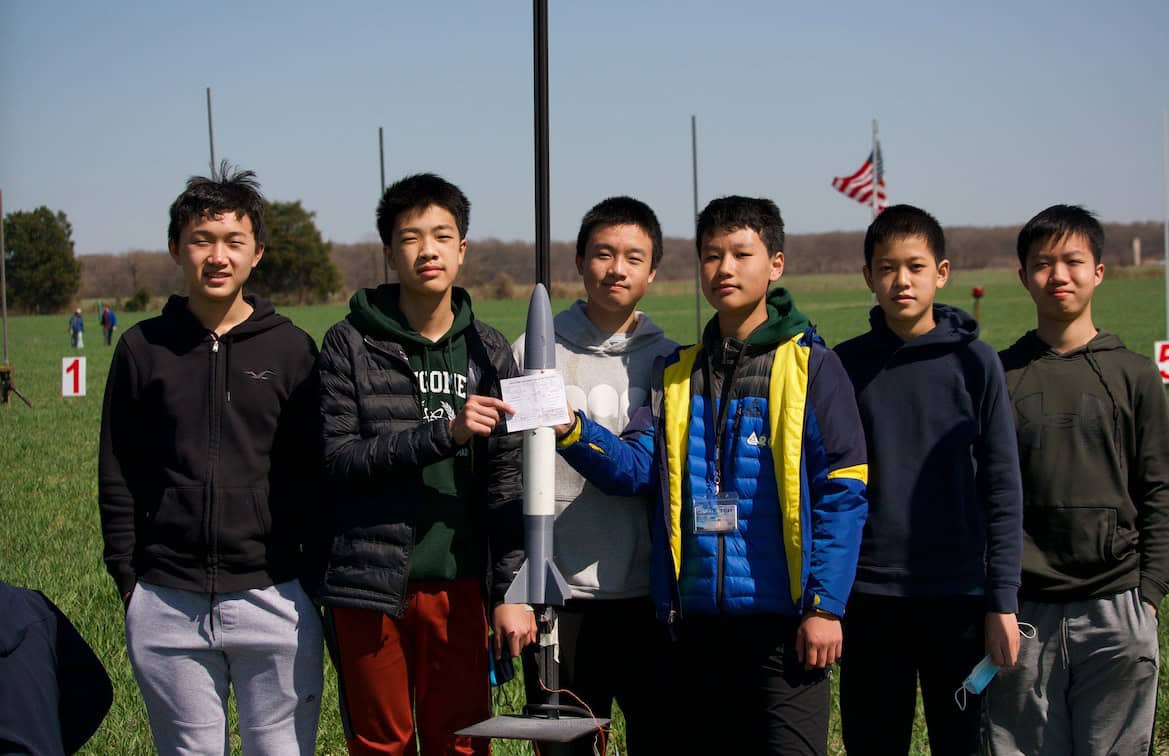An all freshman team from Montgomery High School is one of four teams selected from New Jersey that will compete in the American Rocketry Challenge national finals.
According to the challenge, the American Rocketry Challenge is the world’s largest student rocketry competition and the aerospace and defense industry’s flagship program designed to encourage students to pursue study and careers in science, technology, engineering and math (STEM).
Next month, the team at Montgomery High School (MHS) in Skillman will compete against teams from across the country at the national finals on May 14 in The Plains, Virginia.
Montgomery’s team of six freshmen is one of 100 finalists competing in the challenge.
The MHS team consists of Sean Cao, Max Xing, Eddie Tang, Brian Sun, Kevin Zhao, and Andrew Lu.
“Each student has a slightly different role and are headed under a team leader [Brian Sun] and they are an exceptional group of guys. They are doing a lot of exciting stuff in the field of rocketry as a whole,” said Daniel Lee, MHS teacher and advisor to Montgomery’s student Rocketry club.
This is the first year the students have been together as a team.
“Some had been doing certain things with rocketry ahead of time in middle school, but they have not necessarily come together to compete as group until this year,” he said.
National finalists are competing for $100,000 in prizes and also to be crowned national champion, which would earn the winning team an all-expenses paid trip to London for the international finals.
Teams that land in the Top 25 at Great Meadow in Virginia will automatically earn spots in NASA Student Launch. NASA Student Launch is a research-based, competitive, experiential exploration activity that offers multiple challenges, according to NASA.
To qualify in the 2022 American Rocketry Challenge, teams were required to design, build and launch a model rocket that safely carries two raw eggs to a target altitude of 835 feet, with a target flight duration of 41–44 seconds, according to the challenge.
“The team started their design aspects pretty early on all the way back in August and September in 2021. They don’t actually get the specifics and they don’t really start flight testing until actually, believe it or not, March,” Lee said. “So it has not been really that long that they have been flight testing. I think the first couple of tests they began shooting up were around January and February. From there it came down pretty much down to the line to get that perfect score before the entries closed.”
Making it to the national finals, Lee said he always knew the team had a chance.
“They are exceptional group and all freshmen, which is impressive. Hopefully, this is one of four opportunities for them,” he said. “They will be going up against a lot of students that are little more seasoned. People always say the sky is the limit, but in our case it will be how far into space can we go.”
The American Rocketry Challenge is the aerospace and defense industry’s flagship program designed to encourage students to pursue study and careers in STEM.
The challenge is sponsored by the Aerospace Industries Association, the National Association of Rocketry, and more than 20 industry partners.
“This team’s drive and dedication has impressed me. They do remind me of a team that formed at an undergrad level rather than a high school level,” Lee said. “They have a keen attention to detail. When they are thinking about calculations and about the models that they are creating what other factors are they taking into consideration and how well do they try to match their flight profile to what the predicted weather that day might be.”
The team is currently working on getting the last-minute configurations with the final standards from the challenge having been released.
To get to the national finals, Montgomery’s team first submit the team into the challenge to participate when an open call was issued for the challenge’s 20th year. During their qualifying flights the team was down in Maryland launching their model rockets.
Those qualifying flights would either allow them to be successful in the competition or not.
“You make the bare bones necessary limits and then you get accepted. Everyone is competing for one of those top 100 spots,” Lee said. “So essentially if you make that cut off or minimum score you are in. The difficulty is being consistent with the different launches they have. Kids say it best, sometimes you just get lucky and have that one trial that hits.”
There are series of tasks that the teams need to achieve to create their score.
“Our guys were actually lucky enough to achieve a perfect score on their qualifying flight. There are ranges of scores that allow you to be eligible to qualify,” Lee added. “At nationals it will be pretty much a race to see who can hit that perfect score. A perfect score is pretty difficult to hit. The thing that has happened now is that the range of acceptable heights that their model rocket reaches decreases.”
Editor’s note: The story has been updated from a previous version that included rocketry team members Sourish Pramanik and Joel Pulikkan, who are no longer on the MHS team.

